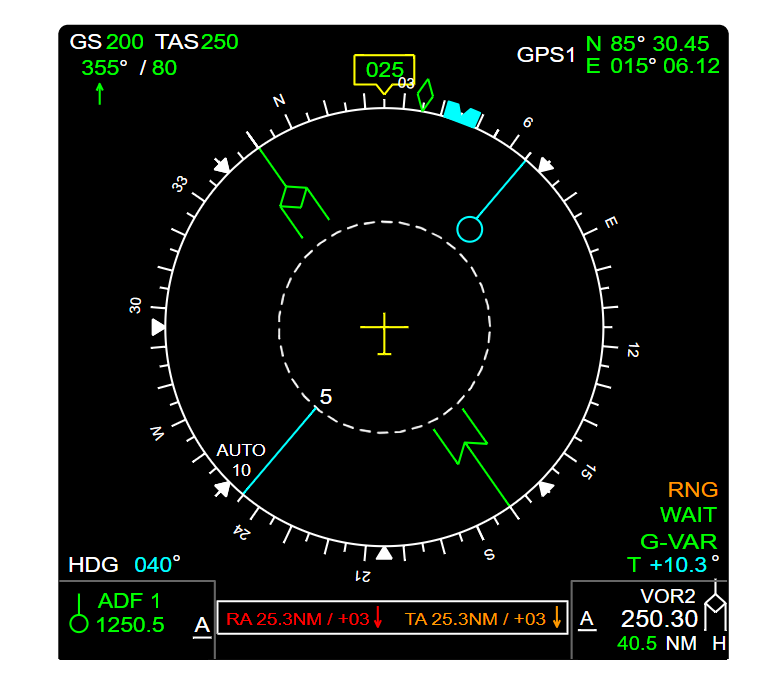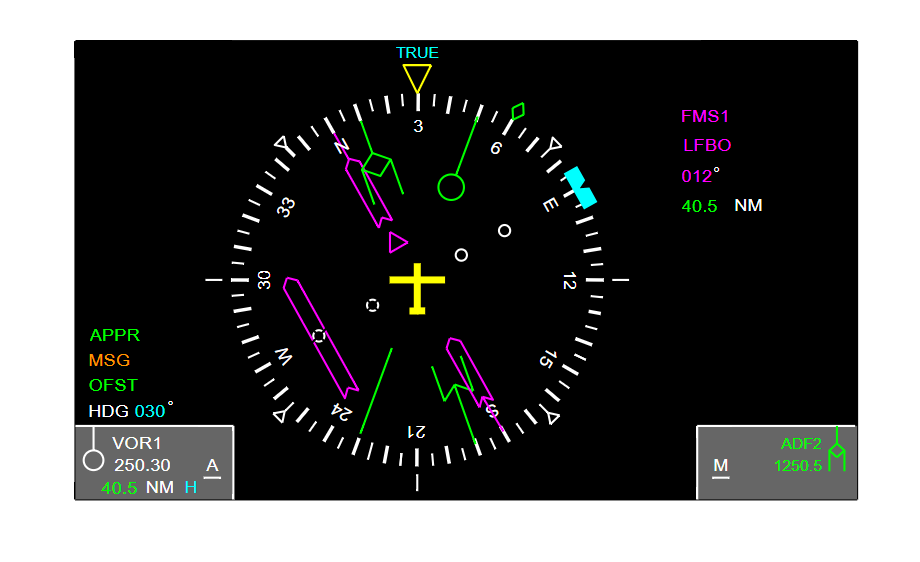An Automatic Direction Finder (ADF) is a crucial radio-navigation instrument used in aviation.
Basic Usage
ADF helps pilots determine the direction to a radio beacon, known as a Non-Directional Beacon (NDB). The ADF receiver in the aircraft continuously displays the relative bearing to the NDB, allowing pilots to navigate accurately.
Components
- NDB (Non-Directional Beacon): Ground-based radio transmitters that emit signals in all directions.
- ADF Receiver: Installed in the aircraft, it receives signals from NDBs and displays the direction to the beacon.
Operation
- Tuning: The pilot tunes the ADF receiver to the frequency of the desired NDB.
- Verification: The pilot verifies the beacon’s identity by listening to its Morse code signal.
- Navigation: The ADF needle points towards the NDB, helping the pilot navigate directly to the beacon.
Advantages
- Simplicity: Easy to use and understand.
- Cost-Effective: Relatively inexpensive compared to other navigation systems.
Limitations
- Signal Interference: Susceptible to interference from weather and terrain.
- Accuracy: Less accurate than modern navigation systems like GPS.
Working Principle
Signal Reception:
- The ADF receiver on the aircraft captures radio signals transmitted by Non-Directional Beacons (NDBs) on the ground.
- NDBs emit signals in all directions (omnidirectional), which the aircraft’s ADF antenna receives.
Antenna System:
- Loop Antenna: Detects the direction of the incoming radio signal. The loop antenna’s output varies with the direction of the signal, creating a figure-eight pattern.
- Sense Antenna: Resolves the 180-degree ambiguity in the direction detected by the loop antenna. It provides an additional reference signal to determine the correct bearing.
Signal Processing:
- The ADF receiver processes the signals from both antennas to determine the direction of the strongest signal.
- The combined signals help the receiver identify the precise direction of the NDB relative to the aircraft’s heading.
Bearing Display:
- The ADF needle on the aircraft’s instrument panel indicates the relative bearing to the NDB.
- The bearing is displayed as an angle relative to the aircraft’s nose, allowing pilots to navigate directly to or from the beacon.


Navigation:
By continuously monitoring the ADF needle, pilots can make necessary course corrections to maintain the desired track.
Pilots use the ADF bearing information to navigate towards the NDB or follow a specific flight path.
Replacement Technologies
While ADF was once a cornerstone of aviation navigation, it has largely been replaced by more advanced systems like VOR (VHF Omnidirectional Range) and GPS (Global Positioning. ADF remains a valuable tool, especially in regions where modern navigation aids are not available. It provides a reliable backup and enhances situational awareness for pilots.
